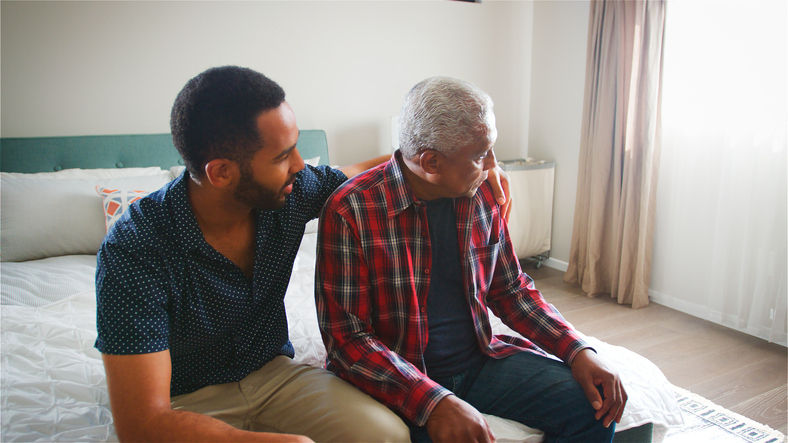Are you doing eldercare the old way?
- Elder Care Law Blogger
- Aug 17, 2017
- 3 min read

Since the first humans roamed the earth, older people, the sick, and disabled have needed care.
Over many millennia, the approach to elder care evolved and eventually coalesced into something like this: A person gets old and moves in with an adult child. Someone in that adult child’s family puts her life on hold to provide care for the elderly loved one. It’s usually a woman. There are no nursing homes assisted living centers, Medicare or Medicaid. It’s the family’s responsibility to meet all the older person’s needs until the elder dies.
That model worked for a long time. But it doesn’t work anymore.
Here’s why.
Lifespan. The average person’s lifespan is no longer 45 or 50 years as it was a century ago. People are living longer than ever and as they age, they tend to develop chronic conditions that require expensive long-term care. Think Alzheimer’s disease, Parkinson’s, and other chronic conditions that can linger for a decade or more.
Fragmented Families. The U.S. is no longer an agrarian society where families have lots of kids, no one moves away, and extended families support each other. Families frequently live in isolated units far from relatives.
Fewer Children. Couples with more than three children are the exception rather than the norm these days. Low birthrates mean that the number of family caregivers will drop to unprecedented low levels.
Cost of Care. Care used to be free (or at least it seemed to be) when a family member was providing it. Now, care is extremely expensive and is often needed for decades. This can create a legal and financial crisis.
Women in the Workforce. When fewer women were in the workforce, it was easier for a family member to assume responsibility for care of an elderly loved one. Dual careers make this far more difficult. People who work full-time and manage the care of an elderly loved one often find themselves constantly working—and totally stressed out.
Too Many Choices. When family caregivers try to determine what action to take to care for an elderly loved one, they’re confronted with a dizzying array of services. Which ones are right for their loved one? The research required to make informed choices is very time consuming.
People today are swimming against a tide that they don’t even realize is there. They try to take care of elderly loved ones the way they saw their parents and grandparents do it. But it doesn’t work.
What’s the answer?
Life Care Planning: Today’s Eldercare Solution
There’s a new way plan for, manage, and navigate the long-term care journey. This new way makes it possible for seniors to avoid placing legal, financial, or emotional burdens on their children as they age. And it gives family caregivers a new way to manage the long-term care journey for elderly loved ones no matter where they live.
This new way addresses the things that don’t work when you try to take the old model of eldercare and apply it in today’s world.
It addresses the legal and financial problems created by the high cost of care.
It solves the problem of proximity created by today’s fragmented families.
It eliminates the analysis paralysis that can happen when family caregivers are overwhelmed with options and have no idea what their loved ones truly need.
At Takacs McGinnis Elder Care Law, we call this new way of eldercare Life Care Planning. It solves the legal, financial, and personal problems caused by aging, long-term illness, and disability. The Life Care Planning process guides and support the elder and family caregivers every step of the way. It provides the kind of caring people have always wanted during the long, difficult, and emotionally draining elder care years.
If you’re doing elder care the old way, take a moment to think about what you might gain by trying something new. And then give us a call at 615.824.2571.






My husband was diagnosed with Parkinson’s Disease (PD) four years ago. For over two years, we relied on prescription medications and therapies, but unfortunately, his symptoms continued to worsen. His memory, coordination, and overall strength declined, and everyday life became increasingly difficult.Last year, out of desperation and hope, we decided to try an herbal treatment program from NaturePath Herbal Clinic. Honestly, we were skeptical at first, but within a few months of starting the treatment, we began to notice real changes. His alertness improved, his movements became steadier, and he regained a surprising amount of energy and clarity.Incredibly, he also regained much of his independence and confidence. It’s been a life-changing experience he feels more like himself again, better than…